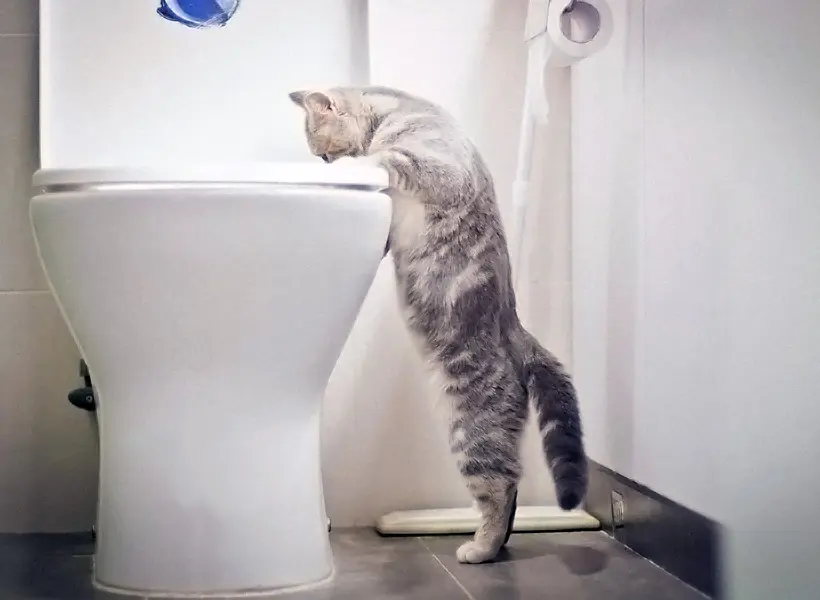Why Flushing Cat Poop Down Your Toilet Is Harmful - Suggestions for Proper Disposal
Why Flushing Cat Poop Down Your Toilet Is Harmful - Suggestions for Proper Disposal
Blog Article
We've found this article relating to Can You Flush Cat Poo or Litter Down the Toilet? listed below on the web and accepted it made good sense to write about it with you here.

Intro
As cat owners, it's vital to be mindful of exactly how we dispose of our feline pals' waste. While it might appear practical to flush cat poop down the commode, this method can have harmful consequences for both the setting and human wellness.
Alternatives to Flushing
The good news is, there are more secure and a lot more liable ways to get rid of pet cat poop. Take into consideration the following options:
1. Scoop and Dispose in Trash
The most typical method of getting rid of pet cat poop is to scoop it into a biodegradable bag and throw it in the garbage. Be sure to make use of a specialized clutter scoop and throw away the waste immediately.
2. Usage Biodegradable Litter
Select biodegradable feline trash made from materials such as corn or wheat. These clutters are environmentally friendly and can be safely gotten rid of in the garbage.
3. Hide in the Yard
If you have a lawn, think about hiding feline waste in a marked location far from veggie yards and water resources. Make certain to dig deep adequate to avoid contamination of groundwater.
4. Set Up a Pet Waste Disposal System
Purchase an animal waste disposal system specifically made for feline waste. These systems make use of enzymes to break down the waste, reducing odor and environmental influence.
Wellness Risks
Along with environmental problems, flushing pet cat waste can likewise posture health and wellness threats to humans. Pet cat feces might include Toxoplasma gondii, a bloodsucker that can cause toxoplasmosis-- a possibly extreme illness, especially for expectant women and individuals with damaged immune systems.
Environmental Impact
Purging pet cat poop introduces unsafe pathogens and parasites into the water system, posturing a significant risk to aquatic communities. These pollutants can negatively impact aquatic life and compromise water high quality.
Final thought
Accountable pet dog ownership extends past offering food and sanctuary-- it likewise entails appropriate waste monitoring. By refraining from flushing cat poop down the toilet and selecting different disposal methods, we can decrease our environmental impact and secure human health.
Why Can’t I Flush Cat Poop?
It Spreads a Parasite
Cats are frequently infected with a parasite called toxoplasma gondii. The parasite causes an infection called toxoplasmosis. It is usually harmless to cats. The parasite only uses cat poop as a host for its eggs. Otherwise, the cat’s immune system usually keeps the infection at low enough levels to maintain its own health. But it does not stop the develop of eggs. These eggs are tiny and surprisingly tough. They may survive for a year before they begin to grow. But that’s the problem.
Our wastewater system is not designed to deal with toxoplasmosis eggs. Instead, most eggs will flush from your toilet into sewers and wastewater management plants. After the sewage is treated for many other harmful things in it, it is typically released into local rivers, lakes, or oceans. Here, the toxoplasmosis eggs can find new hosts, including starfish, crabs, otters, and many other wildlife. For many, this is a significant risk to their health. Toxoplasmosis can also end up infecting water sources that are important for agriculture, which means our deer, pigs, and sheep can get infected too.
Is There Risk to Humans?
There can be a risk to human life from flushing cat poop down the toilet. If you do so, the parasites from your cat’s poop can end up in shellfish, game animals, or livestock. If this meat is then served raw or undercooked, the people who eat it can get sick.
In fact, according to the CDC, 40 million people in the United States are infected with toxoplasma gondii. They get it from exposure to infected seafood, or from some kind of cat poop contamination, like drinking from a stream that is contaminated or touching anything that has come into contact with cat poop. That includes just cleaning a cat litter box.
Most people who get infected with these parasites will not develop any symptoms. However, for pregnant women or for those with compromised immune systems, the parasite can cause severe health problems.
How to Handle Cat Poop
The best way to handle cat poop is actually to clean the box more often. The eggs that the parasite sheds will not become active until one to five days after the cat poops. That means that if you clean daily, you’re much less likely to come into direct contact with infectious eggs.
That said, always dispose of cat poop in the garbage and not down the toilet. Wash your hands before and after you clean the litter box, and bring the bag of poop right outside to your garbage bins.
https://trenchlesssolutionsusa.com/why-cant-i-flush-cat-poop/

Do you enjoy reading up on How to Dispose of Cat Poop and Litter Without Plastic Bags? Leave a comment below. We would be glad to see your opinions about this blog posting. In hopes that you visit us again in the near future. Loved our post? Please share it. Let other people locate it. I value reading our article about How to Dispose of Cat Poop and Litter Without Plastic Bags.
Schedule A Free Estimate Report this page